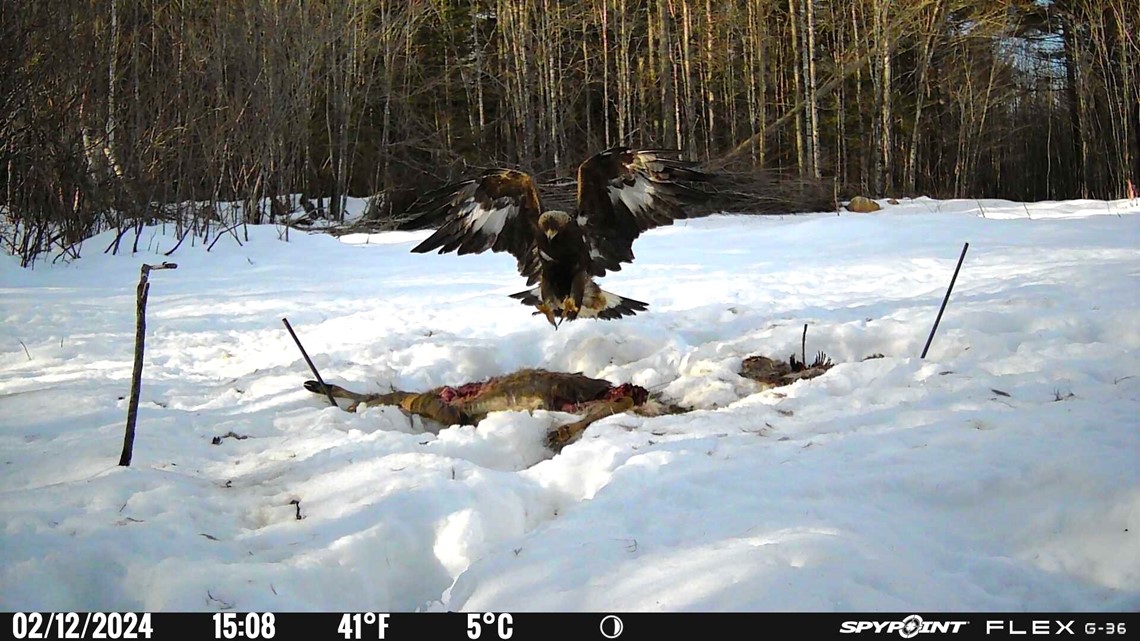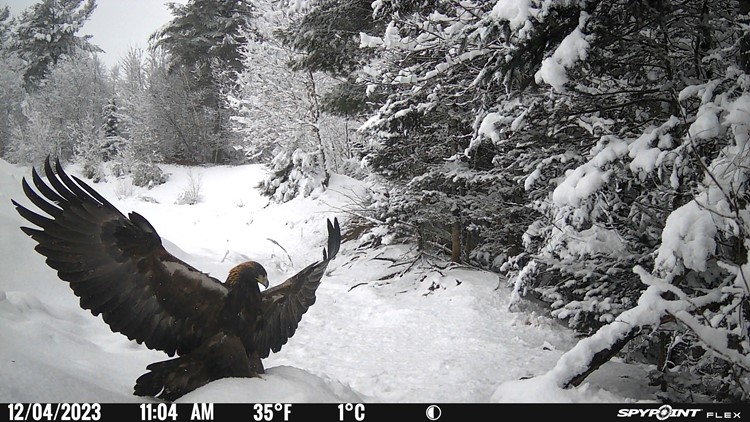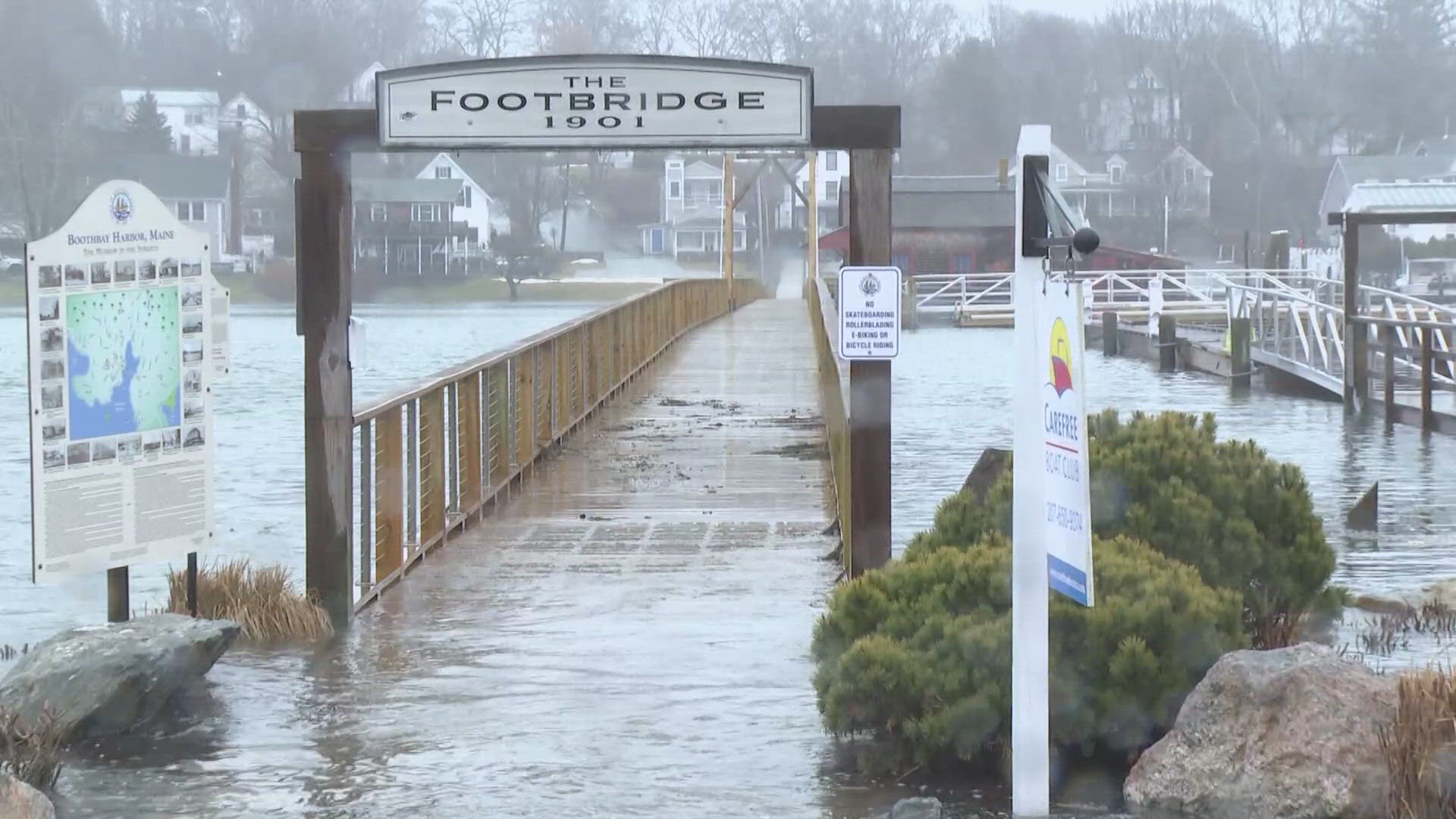MAINE, USA — A study of one of Maine’s endangered avian species has recently taken flight.
In January, the Maine Department of Inland Fisheries and Wildlife (MDIFW), along with the help of Eastern Golden Eagle Working Group, Conservation Science Global, and numerous volunteers, began conducting the Maine Golden Eagle Study.
The study is being led by MDIFW Raptor Biologist Erynn Call, with support from other participants, in an effort to gather more in-depth information on golden eagles in Maine and further conservation efforts.
It focuses on increasing the use of trail cameras to track the state’s golden eagle presence, and landowners and wildlife hobbyists are encouraged to participate.
So far, the "golden" opportunity to further conservation efforts has been well-received.
In a Facebook post on March 4, MDIFW said new information has been reported about golden eagle observations at seven new locations, "six of which are in towns where golden eagles have not been documented in the last 10 years."
Call told NEWS CENTER Maine volunteers have shared photos from a total of 17 study areas with various numbers of baited camera trap sites so far, which will eventually be viewable on a historical observation map here. Multiple participants have even submitted photos of the golden eagles visiting the sites.


The study began with Maine’s participation in the Eastern Golden Eagle Working Group and a recently completed conservation plan by the organization.
Call said participants are taking part in a variety of ways, including wildlife hobbyists maintaining baited traps and sharing photos, those willing to source and donate lead-free bait, MDIFW biologists assisting with multiple aspects of study operations, and landowners and volunteers donating their time and space to the effort.
She explained why golden eagles are a significant species when it comes to the state's ecosystem and culture.
"Golden Eagles are important to Maine in terms of their conservation and cultural significance as well as their contribution to biodiversity," Call told NEWS CENTER Maine. "Goldens are listed as a state-endangered species within the Maine Endangered Species Act and are held in high regard by Native American tribes and an important part of their culture. Their role as top predators and scavengers is key to maintaining biodiversity in Maine."
Historically, knowledge of golden eagle presence in Maine has been "deficient" and sightings have relied heavily on "eBird [an online bird-tracking database] migration count sites, and migration surveys at proposed wind facilities" which reportedly underrepresent the local species population, according to the study’s proposal.
The lack of knowledge about the endangered species is due in part to their "secretive habits" and keen ability to hide away among Maine’s dense forests.
"The last known pair of breeding golden eagles disappeared from the state in 1997, but Maine serves as a migratory corridor and hosts goldens that reside in the state in the summer and winter," according to the MDIFW website. "Eagles tracked with telemetry have visited areas near historic nests during summer, suggesting that these sites could host breeding eagles in the future. However, the extent of use in the summer, as well as the distribution, habitat use, and movements of eagles throughout the year remains largely unknown."
That unknown factor is what makes these recent developments stand out.
"Before the study, we assumed wintering goldens would be moving across the landscape constantly, but we have documented two locations where an individual has stayed at a site for more than a month," Call said.
The study will be completed in two phases over two years. Phase 1 will focus on increasing public awareness and participation in golden eagle conservation, and Phase 2 will zero in on addressing gaps in public knowledge and conservation efforts.
In the future, Call says she hopes to get trail camera sites set up in areas north of Greenville and south of Lewiston. She added that she wants to continue to disseminate information to help distinguish juvenile bald eagles from golden eagles—which at first glance, may appear quite similar—to improve reporting of Maine’s endangered golden eagles.
For more information on Maine’s Golden Eagle study and ways to get involved, click here.



